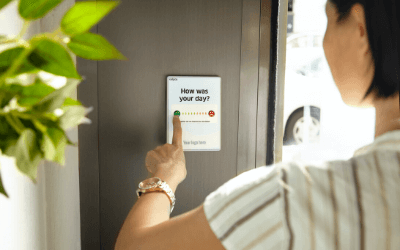Ever wonder about the possibility of landing customers without leads? Well, that will be a miracle of some sort. Right? So, it is safe to say that there can be no sales without leads. That suggests that generating the latter is the starting point towards turning strangers into customers. Up to 65% of businesses agree that the biggest marketing challenge is generating leads and traffic.
That goes beyond difficulties in identifying the right talent, proving ROI, and securing a budget. The implication here is that lead generation is a big deal.
Insight into Lead Generation
The process that marketers use to identify and attract a company’s target market is known as lead generation. The marketing team collects a lead’s contact details such as the phone number, name, and email, which are necessary when conducting a sales follow-up. Successful lead generation depends on qualifying or vetting leads by marketers.
By qualifying leads, salespeople or marketers ensure that the individuals they identify as leads are part of a company’s target market. In simpler terms, a lead is anyone who expresses interest in your products/services. But it gets more complicated than that. There are different types of leads depending on where they came from, how they’ve expressed interest and what they know about your product/service.
Types of Qualified Leads
a) Service Qualified Lead (SQL)
Leads in this category express interest in becoming customers to someone on your customer service team. The responsibility of your customer service representatives, in this case, is passing such leads onto sales through your CRM (we prefer HubSpot).
b) Marketing Qualified Lead (MQL)
Any lead showing interest in your online marketing materials by interacting with your Facebook ad, subscribing to your email list, among other things, is in this group. The catch with MQLs is that sometimes, they’re not quite ready to receive a sales call from your business.
c) Product Qualified Lead (PQL)
The individuals in this category are already using your product and have an interest in becoming paid customers. Quite often, organizations with ongoing freemium plans or free trials work with such people. Eventually, an individual expresses interest in upgrading to the paid option and become a PQL after using your free service for some time.
Not all businesses will have a PQL step in their lead qualification process. But, if you’re using a CRM that has that as a category, you can always change the meaning of PQL to something that makes more sense to your sales and marketing team.
d) Sales Qualified Lead (SQL)
Sometimes, someone may display a clear interest in your service by taking action like emailing you a question even before finishing their purchase. That happens when one goes through your sales funnel, and those are the kind of people that fall in this group. These are going to be your most qualified leads when prioritizing your sales calls. They want to hear from you and usually want to hear from you quickly. Strike while the iron is hot.
The Importance of Lead Generation
If you want to scale your business, you need to focus on lead generation. This will allow you to establish your target market after analyzing website traffic and people who interacted with your ads. After that, you can grow your email list, expand your marketing strategy, and streamline your process for selling to qualified leads.
Here are some stats that show the importance of lead generation:
- Up to 63% of leads who inquire about your business take three months to convert.
- 79% of B2B marketers agree that email is the most effective demand generation channel.
- Lead nurturing enables your sales team to generate 50% more sales for 33% fewer costs.
Steps to Generating Qualified Leads Online
Remember Bill Nye the Science Guy? Well, consider marketers as scientists, because lead generation is all about experimentation and iteration. Here’s an example of one lead generation strategy that your business can start with.
1. Identify Your Target Market
Establishing your target market is the first step towards crafting a lead generation plan. Your target market focuses on the people you wish to serve or those with a natural inclination towards what you offer. Some of the questions worth answering, in this case, include;
- Who is your target audience?
- Where do they live?
- What do they want as it pertains to your business?
- How old are they?
- What problems and challenges are they experiencing?
Viewing your target market as a single individual (customer persona) rather than a group is a wise idea. Having as much information and data as possible about your target market will allow you to understand them better than they know themselves. So, beyond the questions above, you need to ask yourself the following about your audience.
- How was your customer feeling about themselves before using your service?
- Who will they become after they use your service?
- How does your brand transform their lives?
2. Find Your Dream Customer
Once you gain insight into your dream customers, the next thing is finding them. The internet can help you with that. Online publications, influencers, forums, Facebook groups, Subreddits, and YouTube channels catering to your target market, are some of the areas you should consider researching.
3. Design Your Lead Magnet
Sharing details about what you offer and your brand message with your dream customers is the next thing after identifying where they hang out online and penetrating the various channels they use. You can accomplish this through a streamlined website with a sales funnel that converts 24/7.
Doing so will help you maximize the leads you generate, and you can proceed to turn your dream customers into your actual customers. The first step is creating a lead magnet. A lead magnet is some kind of premium content that you offer to your dream customer in exchange for their contact information. If you don’t ask for the contact information, no one will give it to you.
Keep in mind that most people don’t want to give out their email addresses unless they’re interested in what you have to offer. So remember to give your dream customer great value in return for their information. Some examples of lead magnets include a PDF, video series, free sample, live event — essentially anything you can give them to help them solve the first piece of the problem they’re experiencing.
4. Craft The Sales Funnel
The effectiveness of your sales funnel and lead magnet will dictate your ability to convert visitors into leads. Below are some of the options you can use depending on the lead magnet you are using.
- Application Funnel – It is ideal for agencies, coaches, and consultants.
- Webinar Funnel – If you are okay with sharing your expertise or doing online presentations, this option will come in handy.
- Live Demo Funnel – If you are into software or service sales, live demo funnels will prove ideal.
- Summit Funnel – Hosting an online summit can yield a desirable outcome for those seeking to generate sales and build a following.
- Lead Magnet Funnel – Offering such downloadable resources like essays, eBooks, free courses, or checklists can help you get contact information from leads. That makes the lead magnet funnel the appropriate option in this case.
5. Build The Sales Process
Following up leads is not an option, and that is why you cannot afford to overlook the sales process. First, critically assess your current sales process. This will help you understand whether you should automate the process, call each lead within minutes, or opt for a hybrid approach. The price point of your product/service will affect how personalized you get in your sales process.
For a lower-priced sale, you can probably automate most of it. For a luxury product or high-value service, you’re going to want to provide more human interaction.
6. Drive Traffic to The Sales Funnel
Phew! You finally have a lead magnet and a sales funnel at this point. The focus here should be filling the sales funnel with as much high-quality traffic as you can. Generating leads for your business becomes a walk in the park from here.
Conclusion
If you don’t have a reliable lead generation strategy, your business will be crushed by your competition. Follow the steps above to get a head start and develop an effective lead generation tool for your sales funnel. Need some help getting started? View our digital marketing services for more information, and if you’re ready to work with a ferocious team of lead-generating monsters, give us a call.






